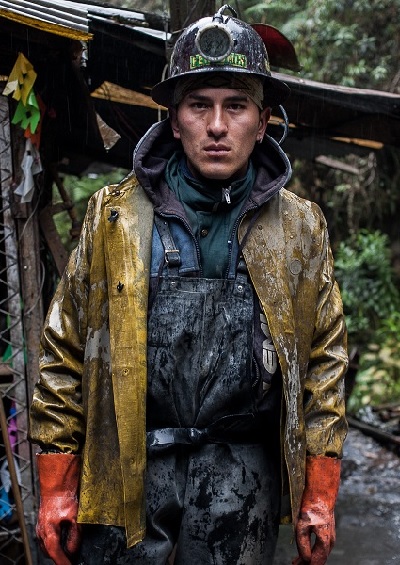Bolivia’s Fair Trade Gold
A Fair Trade certified gold mine in Bolivia offers a sustainable solution to a typically exploitative industry.
November 28, 2015

Born in 1978, Valerian Mazataud is a French Canadian freelance documentary photographer based in Montreal. He is mainly interested in human rights stories, migrations and refugees and has been working in the Middle East, Asia, Africa and South America.
His clients include TV5, La Presse, liberation, Radio-Canada and Handicap international. He is represented by Redux Pictures in New-York and has a master’s degree in agriculture and marine sciences. Antoine Dion-Ortega and Pierrick Blin are two Canadian journalists who accompanied him on his Bolivian trip.
In January 2011, the Cotapata Mining co-operative, a small mine in the heart of Bolivia’s Cotapata National Park, became the world’s first producers of Fair Trade gold.
The cooperative, set up in 1991, now has 25 full members supported by 40 other workers. Its members say their mine offers some of the best working conditions of any mine in Bolivia. Monthly salaries for workers of $300-600 are far above Bolivia’s national minimum wage of $80.
The mine received its Fair Trade certification after meeting conditions set by the alliance for Responsible Mining, a Colombia-based non-governmental organization, and Germany-based Fairtrade international, a body that brings together fair trade producer networks and certification organizations from around the world.
To receive the certification, the cooperative had to meet a range of working practice, safety and environmental standards, among them increasing the number of women workers, providing insurance to all members and recycling mercury used in the mine’s production process.
As well as leading to an improvement in the mine’s working conditions, Fair Trade certification also earns the cooperative an additional 10% on all the gold they sell. The cooperative initially used the extra money it received to build a health center and improve its local school. Now, working in partnership with a local university, the money is being spent on projects aimed at minimizing the mine’s environmental impact.
Text and photographs by Valérian Matazaud
Workers at the Cotapata Mining co-operative live in a permanent camp beside the mine.
 Born in 1978, Valerian Mazataud is a French Canadian freelance documentary photographer based in Montreal. He is mainly interested in human rights stories, migrations and refugees and has been working in the Middle East, Asia, Africa and South America. His clients include TV5, La Presse, liberation, Radio-Canada and Handicap international. He is represented by Redux Pictures in New-York and has a master’s degree in agriculture and marine sciences. Antoine Dion-Ortega and Pierrick Blin are two Canadian journalists who accompanied him on his Bolivian trip.
Born in 1978, Valerian Mazataud is a French Canadian freelance documentary photographer based in Montreal. He is mainly interested in human rights stories, migrations and refugees and has been working in the Middle East, Asia, Africa and South America. His clients include TV5, La Presse, liberation, Radio-Canada and Handicap international. He is represented by Redux Pictures in New-York and has a master’s degree in agriculture and marine sciences. Antoine Dion-Ortega and Pierrick Blin are two Canadian journalists who accompanied him on his Bolivian trip.The Other Hundred is a unique photo-book project aimed telling the stories of people around the world who are not rich but who deserve to be celebrated.
The Other Hundred Entrepreneurs: 100 Faces, Places, Stories — the second volume in The Other Hundred series — focuses on the world’s everyday entrepreneurs. It captures the reality that small and medium-sized businesses, rather than tech billionaires or elite MBAs, contribute the majority of the world’s jobs, including half of all jobs in Africa and two-thirds in Asia.
The book offers an alternative to the view that most successful entrepreneurs were trained at elite business schools. Here are people who have never written a formal business plan, hired an investment bank, planned an exit strategy or dreamt of a stock market floatation. Some work for themselves, others employ a few people, still others a few hundred.
 The book’s 100 stories were chosen from a pool of 10,000 images shot in nearly 150 countries. The book is published by Oneworld Publications in London and is available in bookstores worldwide and online.
The book’s 100 stories were chosen from a pool of 10,000 images shot in nearly 150 countries. The book is published by Oneworld Publications in London and is available in bookstores worldwide and online.




